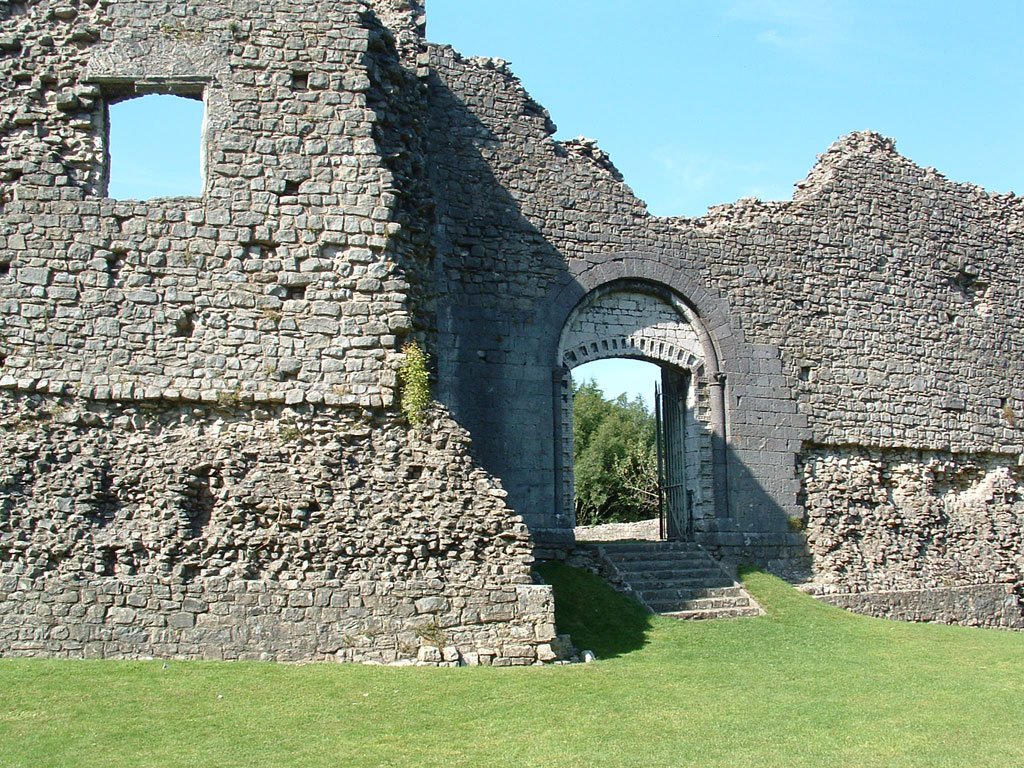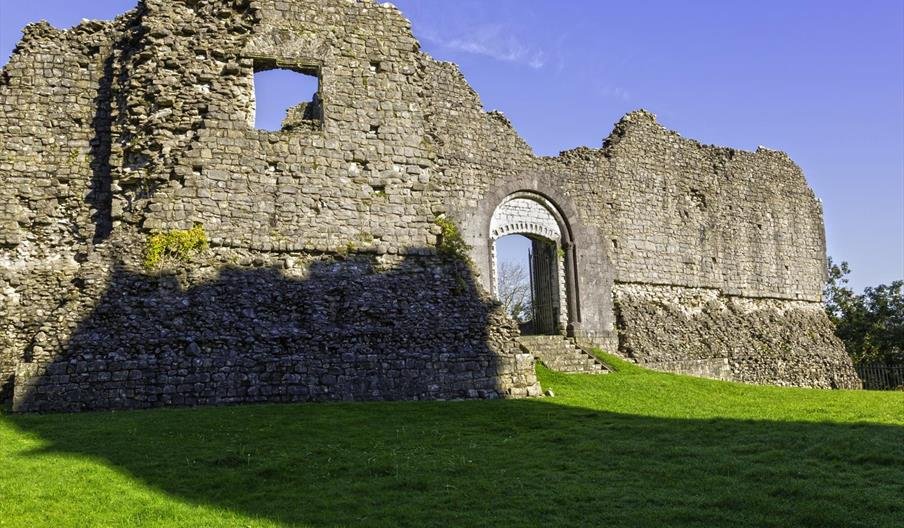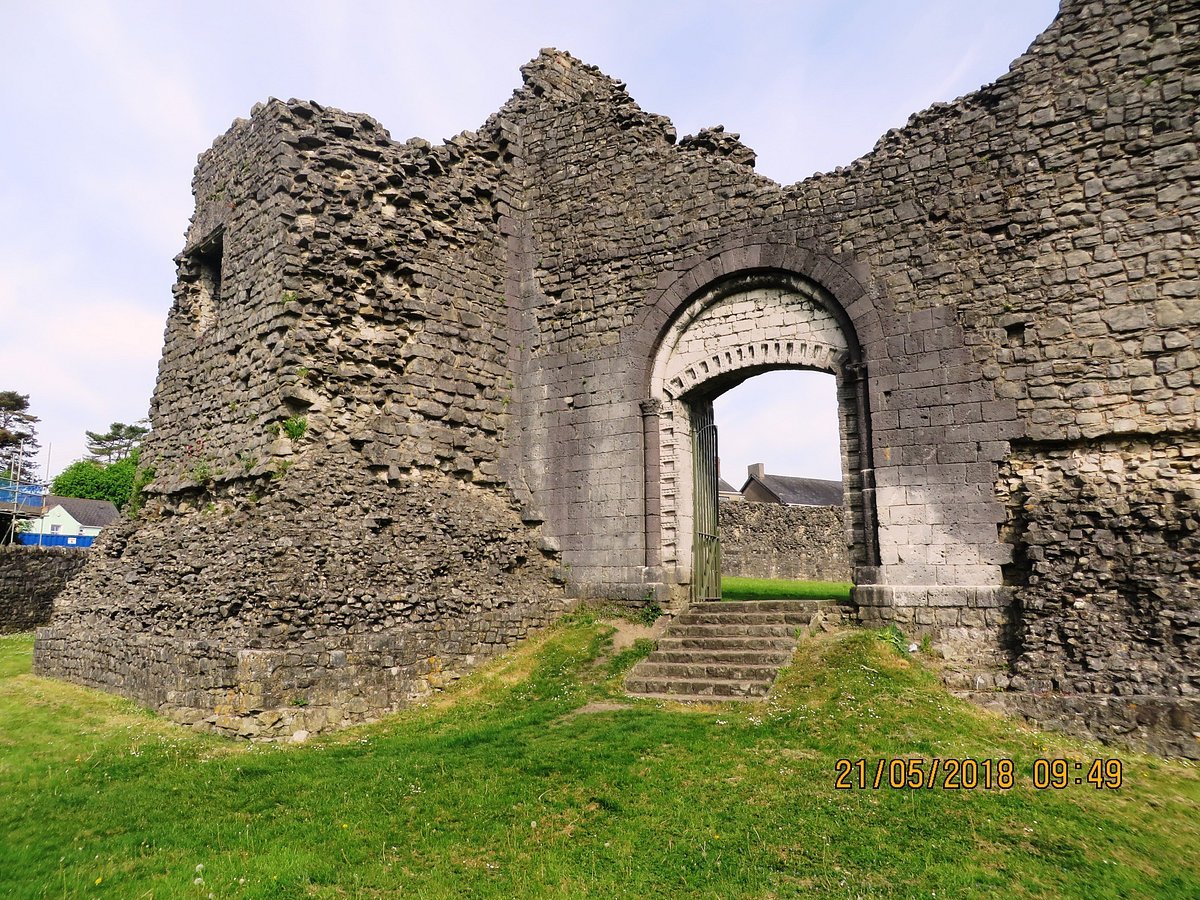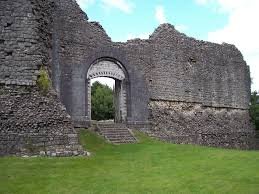Newcastle Bridgend | Visit Amazing Welsh Castles
Newcastle is a Norman castle ruin overlooking the town of Bridgend in South Wales. It dates from the early Norman period and served as a strategic stronghold along the River Ogmore.
Built on a natural hill, Newcastle offered commanding views over the surrounding area. Today, it is a small but significant historic site, open to the public without charge. The remains mostly consist of parts of the curtain wall, a twin-towered gatehouse, and sections of the inner ward.
Quick Facts
Type: Norman castle ruin
Location: Bridgend, South Wales
Built: Late 11th century
Construction Style: Norman stone fortification with curtain walls and gatehouse
Entry: Free access, open site
Dog Policy: Dogs allowed, but must be kept on a lead
Managed by: Cadw
Notable Feature: Twin-towered gatehouse remains
Parking: On-street parking nearby in Bridgend town
Brief History
Newcastle in Bridgend dates back to the aftermath of the Norman conquest of Glamorgan. Historians agree that it was likely constructed around 1106 by William de Londres, a Norman lord responsible for consolidating Norman control in the area. The castle formed part of a defensive network alongside Ogmore Castle and Coity Castle, which protected Norman interests along the River Ogmore valley.
During the 12th century, Newcastle passed into the hands of the de Clare family, one of the most powerful marcher lords in Wales. Around 1183, the de Clares rebuilt parts of the castle in stone, adding the distinctive curtain wall and twin-towered gatehouse that are visible today.
Following the rebellion of Llywelyn ap Gruffudd in the 13th century, Newcastle remained in use but declined in strategic importance. By the late Middle Ages, it fell into disuse. Surveys from the 16th century describe it as ruinous.
Today, Newcastle stands as a reminder of Norman influence in South Wales. It is a scheduled monument under the care of Bridgend County Borough Council.
Features and Layout
Newcastle features the remains of a stone-built Norman enclosure castle. Its most striking feature is the thick curtain wall, constructed from local limestone. Parts of this wall survive to a significant height and outline the compact inner ward.
The twin-towered gatehouse dominates the entrance on the eastern side. Although heavily ruined, its ground floor passageway and partial towers are still visible. This feature reflects the typical defensive architecture of the late 12th century.
Inside the enclosure, the foundations of internal buildings are visible, though only as low earthworks and wall stubs. The layout suggests a small garrison or administrative centre rather than a large military base.
You will notice that some sections of the curtain wall have been patched or rebuilt. This shows the castle underwent repairs or modifications during its occupation.
Did You Know?
The stone curtain wall at Newcastle is unusually thick for a small Norman castle, measuring up to 2.1 metres in width. This may have reflected the unstable conditions of the Welsh Marches in the 12th century.
Visitors often comment on the smooth, worn steps leading up from Bridgend town, showing centuries of foot traffic.
Images





Legends and Stories
Newcastle does not have a wide collection of recorded legends. However, local tradition includes tales of underground tunnels. Some residents of Bridgend claim these tunnels connected Newcastle to Ogmore Castle and Coity Castle. There is no archaeological evidence for these tunnels, but the story persists in local culture (unverified).
A report on TripAdvisor mentions a local guide who described sightings of a "lady in white" near the twin-towered gatehouse. This ghost story is common at several Norman ruins in Wales and is usually tied to unverified local folklore (unverified).
Visiting
Here are the essential details for your visit:
Opening Times & Admission
Open daily, 1 April–31 March, from 10 am to 4 pm (last admission at 3:30/3:45 pm)
Closed 24–26 December and 1 January
Free admission, managed by Cadw
Tickets & Facilities
No entry fee is required
Parking:
Small car park adjacent to the site
Additional on-street parking available in Bridgend town
Accessibility:
Ground-floor areas accessible
A flight of about 10 steps leads up the hill
Facilities:
No visitor centre, toilets, or café on site
Bring water and snacks
Dog Policy
Dogs are welcome on short leads in ground-floor areas
Owners must ensure dogs are under control; staff may refuse entry to off-lead dogs
Directions
Address: Newcastle Hill, Bridgend, CF31 4EY
By car: Accessible from the A4063; nearest public car park is Embassy Car Park
By bike: Accessible via NCN Route 885 (about 0.5 km from the site entrance)
By foot: Short uphill walk from Bridgend town centre via Newcastle Hill
Visiting Highlights
Excellent example of 12th-century Norman doorway and stonework
Traces of Tudor-period adaptations, such as windows and fireplaces in the south tower
Well-preserved curtain walls and twin-towered gatehouse from the late 12th century
Nearby Attractions
Here are top places of interest within easy reach of Newcastle Castle:
Coity Castle
A Norman-origin stronghold largely rebuilt in the 14th century. Managed by Cadw, it presents tall curtain walls and an inner ward with visible remains. It complements the trio of local castles, offering additional historical insight.
Ogmore Castle
Situated by the Rivers Ewenny and Ogmore, these substantial stone ruins include a Norman keep, courthouse, and a riverfront setting. It shares early 12th century origins with Newcastle and Coity.
Ewenny Priory Church
A well-preserved medieval Benedictine priory church, dating to the 12th century. It offers architectural and religious heritage in a picturesque rural setting .
Merthyr Mawr Sand Dunes & National Nature Reserve
Home to "The Big Dipper"—Europe's second-highest dune (~200 ft), and rich ecology spanning sand dunes, wetlands, and woodlands. Ideal for varied walks and exploring natural heritage.
Bryngarw Country Park
A verdant country park featuring woodland trails, riverside paths, and picnic areas—perfect for families and walkers alike.
Visitor Tips
Wear sturdy footwear. The site includes uneven ground and steps worn smooth over time.
No toilets or café on site. Use Bridgend town facilities before your visit.
Visit Coity and Ogmore Castles the same day for a full medieval history experience.
Bring dogs on a short lead, but avoid busy periods if your dog reacts to crowds.
Ideal for short visits (30–45 minutes), making it suitable for quick historical stops.
Combine with a visit to Merthyr Mawr Sand Dunes for natural scenery nearby.
Free parking is limited. Embassy Car Park in Bridgend is a good alternative.
Photography is unrestricted—sunset views over Bridgend are especially popular.
FAQs
-
Newcastle Castle dates back to around 1106. Major stonework additions, including the curtain wall and gatehouse, were constructed in the late 12th century.
-
Yes, a small car park is situated next to the castle. Additional public parking is available in Bridgend town, including Embassy Car Park.
-
Most visitors spend 30 to 45 minutes exploring the site. Those interested in detailed history may spend up to one hour.
-
Yes, dogs are allowed on short leads. Always supervise pets, especially near steep drops and steps.
-
Yes, Newcastle Castle is free and open to the public year-round.
Wrapping it Up
Newcastle Castle in Bridgend offers a compact yet historically significant glimpse into Norman Wales. With its well-preserved curtain walls and gatehouse remains, the castle illustrates the defensive strategies used along the Welsh Marches. The free entry and close proximity to other historic sites make it a convenient stop for those exploring South Wales. Though small in scale, Newcastle provides a direct connection to the medieval history of Glamorgan.
Sources
Cadw
Official site with historical information, opening hours, access details, and visitor facilities.
https://cadw.gov.wales/visit/places-to-visit/newcastle-castleVisit Bridgend
Local tourism guide with heritage trail information and nearby attractions.
https://www.visitbridgend.co.uk/heritage-trail-locations/newcastle-castleParks and Gardens
Heritage listing with brief historical background and public access notes.
https://www.parksandgardens.org/places/newcastle-castle-bridgendWikipedia
Basic historical timeline and architectural overview.
https://en.wikipedia.org/wiki/Newcastle_Castle,_BridgendWikipedia
Information on nearby nature reserve and sand dunes.
https://en.wikipedia.org/wiki/Merthyr_Mawr_Sand_Dunes




The castle was built on the site of a medieval fortified manor, the current structure was designed by architect Thomas Hopper for the wealthy Pennant family.